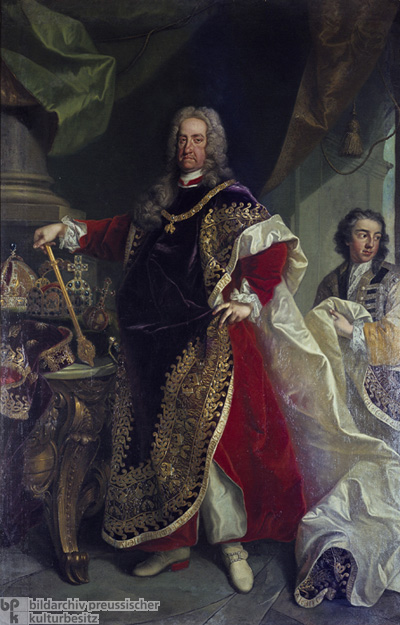













INTRODUCTION | DOCUMENTS | IMAGES | MAPS | EDITOR
|
The son of the Habsburg Leopold I., Charles VI (r. 1711-40) succeeded his brother Joseph I as Holy Roman Emperor. Upon the death of the last Spanish Habsburg in 1700, Charles attempted to assert his claim to the Spanish throne. In the War of the Spanish Succession (1701-14), however, he failed to oust his Bourbon rival, Philipp of Anjou, who was supported by Louis XIV. Charles VI was more successful in leading campaigns commanded by his mighty general, Prince Eugene of Savoy, against the Ottoman Turks and in securing the female succession of his daughter, Maria Theresa (r. 1740-80), to the Austrian throne – though her claim to the throne of the Holy Roman Empire was eventually contested. He also enjoyed success as a patron of the arts, particularly in Vienna (e.g. the Church of St. Charles and the Court Library). When he died in 1740, his realm had expanded in territory and population but was relatively weak in financial, military, and administrative terms. Oil painting by Johann Gottfried Auerbach (1697-1753), first half of the eighteenth century.
© Bildarchiv Preußischer Kulturbesitz / Hermann Buresch |
 print version
print version return to image list
return to image list previous image
previous image
